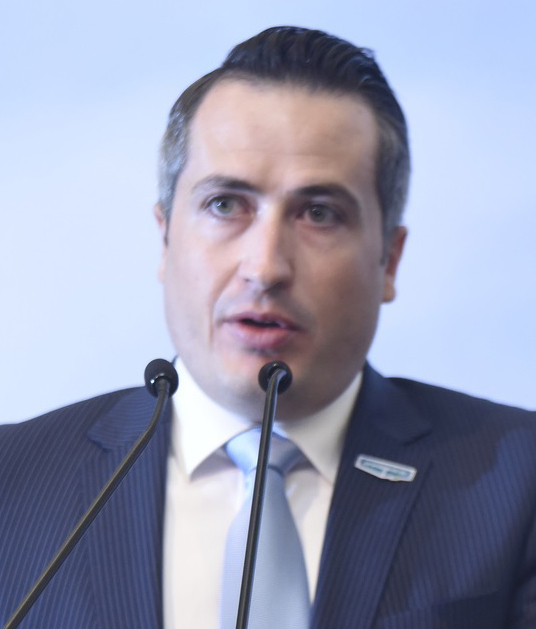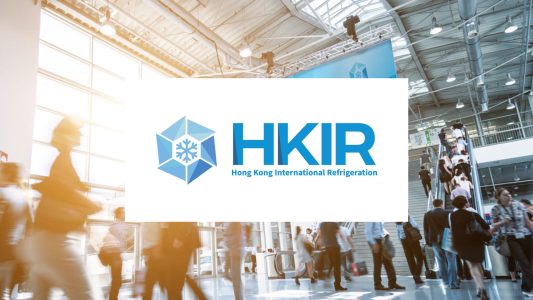Commercial and industrial refrigeration tends to fall by the wayside in the transformation towards greener technologies, despite major technological advancements in the sector offering greater opportunity for more energy savings and reduced operational costs. Eurovent Middle East digs deeper.

 Food safety, energy efficiency and the reduction of Greenhouse Gases are the major drivers of modern technologies in the field of commercial and industrial refrigeration. Despite initial reluctance of stakeholders in the region to adopt alternative refrigerants, such as CO2 and Ammonia, successful case studies have showcased the viability of these refrigeration systems. Technical advancements have also addressed the initial challenges related to equipment and components that can be installed in the Middle East, making a case for its adoption.
Food safety, energy efficiency and the reduction of Greenhouse Gases are the major drivers of modern technologies in the field of commercial and industrial refrigeration. Despite initial reluctance of stakeholders in the region to adopt alternative refrigerants, such as CO2 and Ammonia, successful case studies have showcased the viability of these refrigeration systems. Technical advancements have also addressed the initial challenges related to equipment and components that can be installed in the Middle East, making a case for its adoption.
However, the lack of specific regulations in this area creates a roadblock for the adoption of better systems. As such, there is greater need for education to ensure better understanding and implementation of new solutions available in the market. The region could also benefit from the examples set by Europe, which has taken the lead in Ecodesign and F-Gas Regulations. This is especially true when it comes to handling alternative refrigerants, as the feedback from the industry shows.
Navigating the refrigerants landscape

 The global refrigeration sector has undergone a slow yet steady change over the years, as stakeholders are forced to navigate an increasingly stringent refrigerant landscape, albeit to varying degrees. Francesco Scuderi, Deputy Secretary General, Eurovent Association, names the increasing popularity of natural refrigerants, such as CO2, across Europe as an important landmark for commercial refrigeration. Rafael Van Eijcken, General Manager – Middle East, Turkey and India, Baltimore Aircoil Middle East LLC agrees, also speaking on how natural refrigerants remain high on the agenda of governments across Europe. “While many installations still run with non-natural and heavy refrigerants, most large industrial refrigeration systems take advantage and preference to run with Ammonia, a common and easily available natural refrigerant that provides high energy efficiencies and is non-polluting to the environment.”
The global refrigeration sector has undergone a slow yet steady change over the years, as stakeholders are forced to navigate an increasingly stringent refrigerant landscape, albeit to varying degrees. Francesco Scuderi, Deputy Secretary General, Eurovent Association, names the increasing popularity of natural refrigerants, such as CO2, across Europe as an important landmark for commercial refrigeration. Rafael Van Eijcken, General Manager – Middle East, Turkey and India, Baltimore Aircoil Middle East LLC agrees, also speaking on how natural refrigerants remain high on the agenda of governments across Europe. “While many installations still run with non-natural and heavy refrigerants, most large industrial refrigeration systems take advantage and preference to run with Ammonia, a common and easily available natural refrigerant that provides high energy efficiencies and is non-polluting to the environment.”

 Providing an end-user perspective, Bjorn Ostbye shares the same observation. As the Manager of Project Development for Lulu Group International, a multinational conglomerate operating a chain of hypermarkets and retail companies in the region, he says banned refrigerants are already on the way out and are being replaced with new, acceptable options, though this is still coming at a very slow pace. “The Kigali Agreement is a massive milestone for the industry and the world, and the Middle East market must be quick to adapt,” he adds. “We must be careful now not to become a ‘dumping place’ from other markets and ensure that all old installations will be updated as soon as possible.”
Providing an end-user perspective, Bjorn Ostbye shares the same observation. As the Manager of Project Development for Lulu Group International, a multinational conglomerate operating a chain of hypermarkets and retail companies in the region, he says banned refrigerants are already on the way out and are being replaced with new, acceptable options, though this is still coming at a very slow pace. “The Kigali Agreement is a massive milestone for the industry and the world, and the Middle East market must be quick to adapt,” he adds. “We must be careful now not to become a ‘dumping place’ from other markets and ensure that all old installations will be updated as soon as possible.”

 Andrea Cavalet, Contracting and After Sales Director, EPTA Middle East, says it is only a matter of time before customers recognise the need to transition as part of a global trend, and that considering the lifetime of a supermarket and the deadlines given by Kigali, it is vital to take urgent action. “Main supermarket chains should decide right now which direction to take in new projects in order to avoid much higher expenses in the future,” he says.
Andrea Cavalet, Contracting and After Sales Director, EPTA Middle East, says it is only a matter of time before customers recognise the need to transition as part of a global trend, and that considering the lifetime of a supermarket and the deadlines given by Kigali, it is vital to take urgent action. “Main supermarket chains should decide right now which direction to take in new projects in order to avoid much higher expenses in the future,” he says.
For Michele Mohorovicich, Marketing Manager Refrigeration – EMEA, CAREL Industries, although there is still widespread usage of refrigerants with high global warming potential (GWP) in the Middle East, food retailers are constantly being pushed by regulatory pressure to reduce the carbon footprint of their refrigeration systems. This, he says, will force them to think of using natural refrigerants which can help meet stricter requirements related to energy savings and efficiency.

 “Also, the availability of high GWP refrigerants is constantly decreasing,” he points out. “This is also a driver to push forward with the implementation of natural or other alternative refrigerants with lower GWP. Essentially, if the region wants to stay competitive, sooner or later all manufacturers will need to embrace this shift, and everyone will need to follow.”
“Also, the availability of high GWP refrigerants is constantly decreasing,” he points out. “This is also a driver to push forward with the implementation of natural or other alternative refrigerants with lower GWP. Essentially, if the region wants to stay competitive, sooner or later all manufacturers will need to embrace this shift, and everyone will need to follow.”
Cavalet believes there has been some positive momentum in the region. He says that CO2 has already been tried in the UAE and successful installations have shown how a supermarket chain can implement these green refrigerants at low cost and achieve high efficiency. “There is no reason why alternate refrigerants should not be implemented in the Middle East.”
Building a knowledge base

 Weighing in, Jelle Wagelmans, Business Development Manager, Evapco Europe BVBA, points out that when it comes to the adoption of natural refrigerants in the Middle East, there is still room for improvement with respect to educating the local market. “The high-ambient temperature is an extra hurdle to implement CO2 in refrigeration systems in the Middle East efficiently,” he says. “If you operate systems at high pressure there is less room for errors, that’s why people in the region are hesitating as there is a lack of knowledge. However, this is something we will need to work on as the whole world is marching towards a carbon neutral society.”
Weighing in, Jelle Wagelmans, Business Development Manager, Evapco Europe BVBA, points out that when it comes to the adoption of natural refrigerants in the Middle East, there is still room for improvement with respect to educating the local market. “The high-ambient temperature is an extra hurdle to implement CO2 in refrigeration systems in the Middle East efficiently,” he says. “If you operate systems at high pressure there is less room for errors, that’s why people in the region are hesitating as there is a lack of knowledge. However, this is something we will need to work on as the whole world is marching towards a carbon neutral society.”
Van Eijcken says that although there is some delay in fully implementing new standards and technologies in the region, leveraging on the experience from overseas markets, once the position and direction is clear among local stakeholders, would help accelerate the transition to natural refrigerants. Scuderi says that the Middle East region could learn a great deal from European manufacturers who have built a knowledge base from operating in countries that have had to adapt to the phaseout schedule at an earlier time. “In Europe they are skilled enough, but it was not the case 14 years ago when it had just started,” he says. He explains that in the beginning, major manufacturers in Europe had their own academies to train technicians internally and externally, including senior engineers that handle more traditional equipment. In a similar fashion, Scuderi says that in the Middle East, there is a clear need for an academy for installers for solutions with natural refrigerants to ensure safe operations as part of a long-term strategy. “There needs to be a clear knowledge base among trainers, installers and maintenance personnel when it comes to the use of CO2 for commercial applications,” he says.
Mohorovicich also says that if local industry associations push towards promotion of training programmes to cultivate skilled workforce the same trend can be replicated in the Middle East. Cavalet adds that increasing the competence of these technicians would also reassure customers who would then see less barriers in the implementation of such solutions. He adds that this will support the work of advanced industries in the market, which act as consultants to the customers in order to educate and drive them towards the adoption of more environmentally friendly refrigerants.
Ostbye believes that such a trend is natural. “Most of the developments in the industry are done by manufacturers forced by the drive to catch market shares,” he says, pointing out that this marks the difference between companies willing to make the change and those that are simply sitting back to watch change happen. “Responsible suppliers should work closer with the market and arrange training for those that are interested in improvements and learning,” he says. Ostbye adds that the industry would benefit from tapping into the incredible level of experience of experts in the region and inviting specialists from other parts of the world to share their experience even after retirement.
Putting the R in SMART
In addition to accommodating the evolving refrigerant landscape, another important variable shaping the industry is the growing demand for smarter controls. Ostbye says that the rise of Artificial Intelligence (AI) monitoring of refrigeration installations and operations greatly helps keep installations healthy, promote longer lifespan and lower operational costs. “It will also make it easier for the end user to ensure that temperature and humidity are maintained and, therefore, the quality of products are maintained,” he says.
Van Eijcken is in agreement. “There is increasing demand from customers to measure and trend the running conditions of their equipment in order to optimise the system operation towards varying capacity demand, maximum energy and water savings, among other variables,” he says. “The more one supplier can integrate into their equipment and/or can provide such solutions — the stronger the competitive advantage.” Van Eijcken says that although the industry seems to run a bit behind with only few or limited solutions available to date, leading manufacturers are integrating full controls in the new products launched in the market and that this will be a trend moving forward, exclaiming that “To measure is to know!”.
Adding to this, Mohorovicich says that it is now becoming imperative to have the option to properly evaluate the performance of the whole retail chain, analysing the behaviour from all the different units and areas in order to spot strange deviations from the standard expected working operation. “One of the approaches that could potentially bring among the largest savings in supermarkets is related to the implementation of cloud connectivity solutions and IoT technologies,” he says. “Data is definitely to become the king in this sector and real-time, data-driven energy programmes can transform energy-intensive supermarkets into a flexible and reliable asset.”
For Wagelmans, such transparency is not only useful to reduce the system downtime, but it can also assist to ensure safety. “If you talk about systems with natural refrigerants, it is getting more critical. The system will need to be monitored closely, to allow quick action in case something goes wrong,” he says. “That’s where cloud connectivity and AI can play an important role in the future.”
For Scuderi adoption is most prevalent in bigger companies. “If we look at big supermarket chains, for sure the trend is that all display cabinets and cooling installations are under a monitoring system, which helps in controlling energy consumption and maintenance,” he says. “Telemonitoring is almost a must. Our European manufacturers provide turnkey systems with sensors to monitor everything remotely. This is quite important to help in maintenance and fine-tuning the performance of a supermarket. For sure, smart controls and a clear integration between HVAC and refrigeration in a supermarket is the best way.”
Mohorovicich adds that this also goes a long way when it comes to reducing operational expenditure. However, he adds that while the market is appreciative, there is still a long way to go in order to convince the end user to embrace and understand the benefits of investing in IoT solutions and digital technologies. “The focus should be put on identifying appropriate innovative business models aimed at bringing real value and benefits in the eye of end users,” he says. “I think also end users and manufacturers should work together in a co-creation way to unlock the value behind these technologies.”
Shifting mindsets and regulations
Cavalet says that while a number of solutions have gained stronger ground in Europe reflecting the market’s drive to reduce running costs, in the Middle East, available solutions such as Electronic Expansion Valves, VFDs on the compressors racks, EC condenser fans and monitoring systems, are not yet widely implemented with most of the main supermarket chains placing a focus on capital cost, often overlooking operational cost.
As such, Van Eijcken says the Middle East region would greatly benefit from shifting towards a long-term mindset. “The HVAC industry is the largest energy consumer in the region and accordingly has the pressure towards continuous improvement in terms of quality and energy savings,” he says. “Although the strong desire for high quality, the regional high pressure on costs and pricing, and the many different global solutions offered on the market make it difficult for buyers to balance the important quality and energy aspects against the attractive initial installed savings, this results too often in year-round system inefficiency, reduced durability, unsafe operation and intensive maintenance of the equipment.”
Van Eijcken adds that proper evaluation of quality and energy requires a holistic systems approach and a total cost of ownership perspective over the lifetime of the installation. “Absence of such an approach too often results in choosing lower grade equipment because of the initial purchase attractiveness,” he says. “However, when supported by good consulting engineers, many customers do consider longer term perspectives and realise optimal efficiency and reliability potentials, which then often triggers an appetite for further system improvements.” At the end of the day, Van Eijcken says that one should not only look to new technologies to provide energy savings. “Alternative, meaning long existing and readily available technologies may provide significant advantages as well,” he says.
Nevertheless, to help achieve this change in mindset, there has to be push from regulatory stakeholders. Ostbye says that the industry is still very slow to act, especially in relation to adoption of natural refrigerants, with the majority leaving it up to the end user to decide when and how to act. “Therefore, it would be a great help if there is instruction from Authorities in the region to speed up the process,” he says.
Cavalet adds that such a move is important considering regulations, along with customer demand and industry recommendations, typically dictate the technology implemented in the commercial refrigeration market. “Local regulations are not giving strong directions that can drive the decisions of the customers,” he says, adding that he hopes a push towards a more sustainable approach, which is a key focus of the World Expo to be held in October 2021 in Dubai, would improve the awareness in the market and boost implementation of better technologies. The advantages of such an approach can already be observed in Europe, Cavalet says, pointing to the introduction of the F-Gas Regulation in 2014. “Short and clear deadlines were introduced that forced the industries and the customers to invest and introduce new technologies. R744 (CO2) technology had in this time the biggest push in the history of the refrigeration market and it is now the most common refrigerant used.”
Weighing in, Scuderi provides further updates on the progress that the regulatory landscape in Europe. “1 March 2021 serves as the application date for the 2005 Ecodesign Regulations for commercial refrigeration,” he says. “The regulatory process started 2005 and it has been a long path in between. The industry has been getting ready for this challenge and there was a strong push for a clear regulatory environment, applying a progressive green thinking resulting in low consumption equipment. I would consider for the Middle East a kind of similar Ecodesign Regulation to push out worst performing products.”
Scuderi adds that an important aspect of the Ecodesign Regulation is that it will be mandatory to provide retailers with maintenance and all related information on how to repair the system, including dismantling the product. “This is a step towards a circular economy,” he stresses. “Circular refers to recyclability of components, including each single screw present in a cabinet. All in all, this helps in the reduction of CO2 emissions thanks to the use of refrigerants with lower GWP and the use of remote maintenance and controls in supermarkets. This is a key step and will be made mandatory in Europe starting from 1 March. It would be reasonable to consider the same path in the Middle East. The technology is there, European companies are ready to do it – so, why not?”
Eurovent Middle East hosted a webinar on supermarket retrofits last November. The recordings of the presentations on technologies and solutions are available on our YouTube channel. They provide comprehensive insight into the above-mentioned options to improve energy consumption in supermarkets.




















